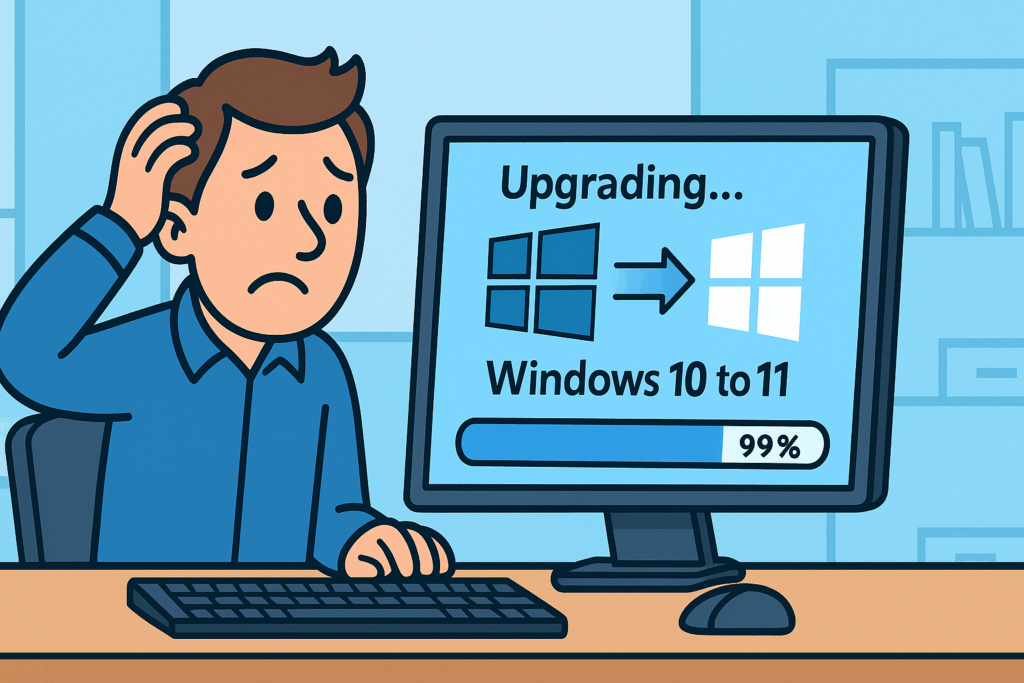
Excerpt
Most “email impersonation” losses start quietly—rules that forward, delete, or hide mail. This playbook backs up evidence, stops the bleed, removes risky rules, clears forwarding, and verifies. Calm hands, clear steps.
Intro
Most “email impersonation” (BEC) starts in two ways:
- Real-account misuse—someone phishes a password/token and quietly adds inbox rules (forward, delete, hide) or enables mailbox forwarding.
- No-account spoofing—look-alike domains and weak SPF/DKIM/DMARC let crooks send as if they’re us.
This post fixes bucket #1 fast. You don’t need Compliance Center/Purview to clean a single mailbox: run these in Windows PowerShell 5.1 to back up → stop all rules → remove risky patterns → clear forwarding → verify. The examples below target [email protected]. After cleanup, keep the door shut by disabling SMTP AUTH/legacy protocols and blocking external auto-forwarding. (For bucket #2, tighten SPF/DKIM/DMARC—that’s outside this quick fix.)
Perspective
There are no super heroes in IT—no capes, no instant rescues. When rules go rogue, heroics make noise; runbooks make progress. The job is to protect people’s work with boring, proven steps.
Practice (today, not someday)
- Connect (read-only) — open a secure session to Exchange Online for the mailbox you’re fixing.
Import-Module ExchangeOnlineManagement -RequiredVersion 3.9.0 -Force Connect-ExchangeOnline -UserPrincipalName [email protected] -ShowBanner:$false $mbx = "[email protected]" - Backup rules to CSV (read-only) — take a snapshot so you have evidence and an easy rollback reference.
$ts = (Get-Date).ToString('yyyyMMdd-HHmm') Get-InboxRule -Mailbox $mbx | Select Name,Enabled,Priority,From,SentTo,SubjectContainsWords,MoveToFolder,ForwardTo,RedirectTo,DeleteMessage,StopProcessingRules | Sort Priority | Export-Csv "$env:USERPROFILE\Desktop\$($mbx)-InboxRules-$ts.csv" -NoTypeInformation -Encoding UTF8 - Disable all rules (change) — safe stop; nothing runs while you fix things.
Get-InboxRule -Mailbox $mbx | Disable-InboxRule -Confirm:$false - Remove delete rules (change) — get rid of any rule that silently deletes messages.
Get-InboxRule -Mailbox $mbx | Where-Object {$_.DeleteMessage} | ForEach-Object { Remove-InboxRule -Mailbox $mbx -Identity $_.Name -Confirm:$false } - Remove hide/stop rules (change) — remove rules that hide mail (Junk/Archive/RSS/Conversation History) or halt further processing.
Get-InboxRule -Mailbox $mbx | Where-Object { $_.StopProcessingRules -or ($_.MoveToFolder -match 'Junk|Archive|RSS|Conversation History') } | ForEach-Object { Remove-InboxRule -Mailbox $mbx -Identity $_.Name -Confirm:$false } - Remove forward/redirect rules, focusing on external (change) — strip any rule that forwards or redirects mail, especially off-tenant.
$internal = @('jetmariano.us') # add internal domains if needed $rules = Get-InboxRule -Mailbox $mbx foreach($r in $rules){ $targets=@() foreach($t in @($r.ForwardTo)+@($r.RedirectTo)){ if($t -is [string]){$targets+=$t} elseif($t.PrimarySmtpAddress){$targets+=$t.PrimarySmtpAddress.ToString()} elseif($t.Address){$targets+=$t.Address.ToString()} elseif($t){$targets+=$t.ToString()} } $external = $false foreach($addr in $targets){ if($addr -match '@'){ $domain = ($addr -split '@')[-1].ToLower() if(-not ($internal -contains $domain)){ $external = $true } } } if($external -or $targets.Count -gt 0){ Remove-InboxRule -Mailbox $mbx -Identity $r.Name -Confirm:$false } } - Clear mailbox-level forwarding (change) — turn off any top-level forwarding set on the mailbox.
Set-Mailbox -Identity $mbx -DeliverToMailboxAndForward:$false -ForwardingSmtpAddress $null -ForwardingAddress $null - Verify list and count (read-only) — prove you’re clean; zero is ideal.
Get-InboxRule -Mailbox $mbx | Sort Priority | Format-Table Name,Enabled,ForwardTo,RedirectTo,MoveToFolder,DeleteMessage -Auto (Get-InboxRule -Mailbox $mbx | Measure-Object).Count - Re-enable only safe movers (optional change) — if you truly want routine filing, turn on only simple move-to-folder rules.
Get-InboxRule -Mailbox $mbx | Where-Object { $_.MoveToFolder -and -not $_.ForwardTo -and -not $_.RedirectTo -and -not $_.DeleteMessage -and -not $_.StopProcessingRules } | ForEach-Object { Enable-InboxRule -Mailbox $mbx -Identity $_.Name -Confirm:$false } - Disconnect (read-only) — close your session cleanly.
Disconnect-ExchangeOnline -Confirm:$false
Final Reflection
The work narrowed down to steady steps. Not a clever hack—just patience, order, and protection of someone’s inbox.
Pocket I’m Keeping
Runbooks over heroics.
What I Hear Now
Be steady. Protect the work. I’ll show you the next step.
© 2012–2025 Jet Mariano. All rights reserved.
For usage terms, please see the Legal Disclaimer.
